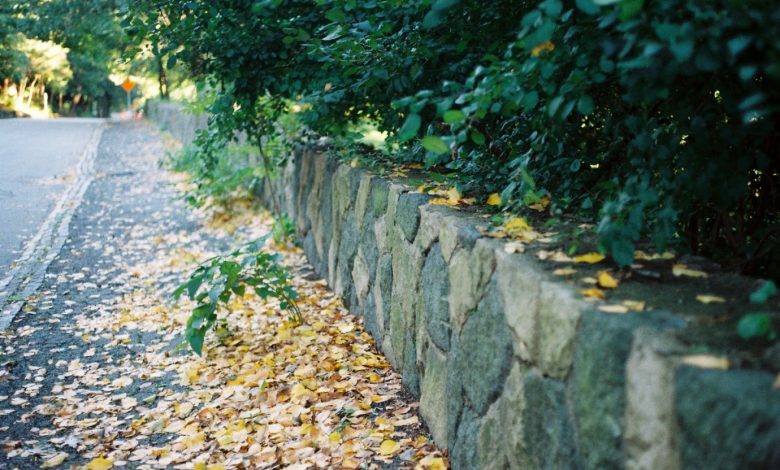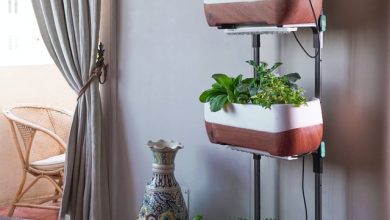Inexpensive Retaining Wall Ideas for Your Garden

Uneven grounds usually have poor drainage, are prone to erosion, not easily accessible, and support mainly ground cover plants. If the ground outside your home is a slope or undulating, you may need a retaining wall to have a noteworthy garden.
As the name implies, a retaining wall holds soil to a part of the building, allowing for two distinct ground levels to exist in one area. On one side of the wall is the retained soil at a higher level, and on the other side of the wall is a lower flatter ground.
Here are some reasons why you should erect a retaining wall:
- Retaining walls curb flooding and erosion, thus preserving the landscape.
- You’ll see a reduced cost of maintenance arising from erosion and poor drainage of the area.
- It enables gardening, as the land is better utilized and will support a variety of plants.
Retaining walls have historically been built using concrete, as the material is robust, durable, and functional. While these qualities are desirable, concrete isn’t particularly appealing to the eye.
As most will agree, a garden should be beautiful. There’s no reason why functionality and aesthetics can’t go hand-in-hand. Here’s a list of inexpensive retaining wall ideas that combine functionality and aesthetics.
Rendered and Painted Wall
If you already have a concrete retaining on a property, you can give it a makeover by rendering it with cement and then painting over it. White paint generally looks good in every setting. However, you can choose any color that blends and complements the surrounding landscape.
Brick Walls
For lower heights, traditional brick walls will serve effectively as retaining walls. Red brick walls are particularly appealing to the eye when they’re well constructed. Bricks are readily available, robust, and easy to work with, making them an inexpensive but effective option for retaining walls.
Mosaic Stone Wall
If you’re not particularly keen on flowering plants yet you still appreciate some color in your backyard, an option to consider is a mosaic stone wall. The wall is made of different colored natural stones held together with cement mortar. Depending on the sizes of the stones, mosaic walls may not be suitable for small yards, as the wall will take up considerable portions of available land.
Wooden Fence
In replacing or erecting a retaining wall, a wood fence is generally a less expensive choice with popular options like treated pine and railway sleepers. Besides being inexpensive, wooden fences have a more uniform and tidy appearance than stone walls and gabions. A critical point to consider in constructing wooden walls is the active earth pressure of the soil behind the wall. The wall will need to be more robust to resist more significant forces against it.
Wooden fences are also shorter-lived than their stone and concrete counterparts. Therefore, it’ll need regular replacements. That said, galvanized steel between the wood may prolong the fence’s durability.
Concrete Block Walls
Solid concrete blocks are relatively cheap, easy to install, and work correctly as low level retaining walls. Feel free to paint over or clad it if the finished wall does not appeal to you.
Cinder Block Walls
Cinder blocks are more cost-effective than concrete blocks. These blocks have rectangular holes in them, and as a result, are lighter than concrete blocks. The blocks are not ideal for big retaining walls, as their light weight will not support heavier soils. Initially, the appearance of cinder walls may not be appealing, but you can rectify it by painting over it. Given time, moss will eventually grow over cinder walls and make it look more natural.
Poured Concrete Walls
Concrete blocks may not be the cheapest option. Poured concrete, on the other hand, is significantly less expensive, as it is a simple mix of cement, gravel, and sand. Given that you can pour the wet concrete mixture into almost any shape, poured concrete walls can serve for both small and large yards. You can easily decorate the finished wall to suit the surrounding landscape.
Stone Veneer Walls
Stone veneer is a budget-friendly option for obtaining a luxurious looking retaining wall. This type of fence employs natural stone over other materials (ideally concrete).
Camouflage Wall
If you’re dissatisfied with an existing retaining wall, you can quickly improve the look of the wall or hide it entirely with decorative plants, such as shrubs or creeping plants. As they multiply, they’ll cover the wall in months if given adequate care.
Natural Stone Wall
Medium to large-sized stones arranged side by side are functional options for retaining walls. Due to their size and density, the rocks can support their weight and, at the same time, hold back the pressure from the soil. Natural stone comes in different colors; they lend a real and rustic look to the garden. As these walls do not necessarily require mortar, they are cheaper alternatives to bricks and concrete walls.

Metal Sheet Walls
When metal sheets are driven into the ground and the visible part is shorter than the buried portion, it can hold back small to medium height soils. The stability of metal sheets stems from the active and passive earth pressures acting on the buried part of the metal. Although unconventional, galvanized metal sheets are both functional and will lend a unique industrial feel to the yard.
Gabions
Gabions are steel cages filled with stones and boulders. Traditionally used by the military and for civil engineering works, people use gabions in homes as retaining walls thanks to the stability and edgy aesthetics they provide. Instead of mortar, the stones are held together by wire cages. As such, the size of boulders used in a gabion will depend on the cage, as tighter woven cages can keep smaller stones.
Gabions tend to be large, so they’re best suited for equally large yards where their size won’t substantially reduce the available space.
Irregular Wall
Retaining walls are usually built as straight lines and less frequently curved lines. There’s no law stating that all walls must follow this pattern. An irregular wall that combines straight lines and curves will add a dramatic effect to the garden. If done correctly, it will seamlessly allow the addition of bench spaces, fountains, and planters.
Tiered Terrace Retaining Wall
In particularly slopy areas, a series of low-level terrace walls will prevent erosion and the distraction of an exceptionally tall fence. The combined cost of building several small retaining walls makes this one of the more expensive options. However, it allows you to avoid the cost associated with maintaining a slopy field. It’ll also make for a unique garden theme, as you can plant a different outdoor plant on each level.
Tiered Gabion Wall
A tiered gabion wall is a variant of the tiered terrace. Replacing terraces with gabions provides the same benefits as the tiered terrace wall. The color of the boulder does not hamper a gabion’s ability to function as a retaining wall. However, the garden will benefit from lighter-colored rocks, as it contrasts significantly against the greenery of the garden.
Stacked Stone Walls
Stacked stone retaining walls are growing in popularity, and it’s easy to see why. These walls do not require mortar or binders, their color and feel easily blend well with the natural surroundings, and they can serve for large and small walls. Another advantage of this wall is that it looks premium but doesn’t cost too much.
Sandstone Walls
Sandstone may not be as cheap as some of the options on this list, but they make up for this by being durable. Its blocks will last a lifetime, with little to no maintenance. Widely available in red, brown, tan, and yellow, sandstone blocks will serve in a range of locations.
Vertical Planter Wall
You can make a stacked stone or boulder wall look even more natural by growing succulent plants in the gaps between rocks. That way, you’re effectively turning the wall into a vertical planter, as succulents tend to multiply by themselves.
Stacked Boulder Walls
Stacked boulders are perfect for short retaining walls, as they require no real professional input to build. You can get medium and large-sized rocks from fields or stores, arranging them atop each other and filling any gaps with smaller stones. Although not necessary, a layer of builder’s sand or cement mortar between boulders can extend the wall’s lifespan.

Living Wall
This wall is similar to the vertical planter wall discussed above. Still, a living wall will allow you to grow other outdoor plants besides succulents. The brickwork arrangement of concrete slabs is not only functional, but it also presents gaps that a gardener can fill with soil. A seasoned gardener can easily plant a variety of plants in these holes, positioning them according to the amount of sunlight they require, seeing as the plants in front will get more sunlight than those outside
Cladded Wall
Another remedy for existing concrete walls is cladding. Cladding will mask a boring concrete wall and instead give it the appearance of a different material. Cladding materials come in various designs and texture, such as wood, marble, natural stone, and even metal. Cladded walls imitate the actual materials. As such, with cladding, you can dress up old concrete to look like marble. Cladding is a fast and inexpensive option, as it eliminates the need for building a new wall.



